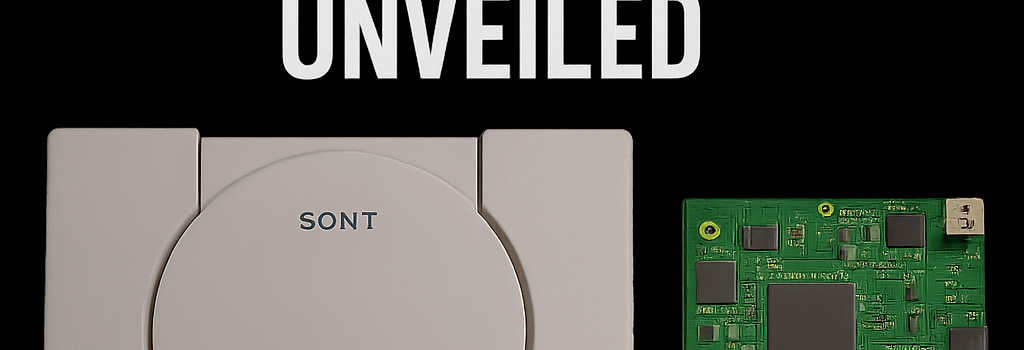First Custom Motherboard for 1990s PlayStation 1 Unveiled

Last week, electronics engineer Lorentio Brodesco publicly released the mock-up of nsOne, the first custom-designed motherboard for Sony’s iconic 1994 PlayStation 1 console. Unlike FPGA recreations or software emulators, nsOne is a genuine PCB built to accept authentic PS1 chips and slot neatly into the original SCPH-900X chassis. This milestone promises to extend the life of dying consoles and preserve hardware fidelity for retro gaming enthusiasts.
Reverse-Engineering a 30-Year-Old Classic
Brodesco’s journey began in March 2024, when a routine PS1 repair revealed gaps in public documentation. By physically sanding an original motherboard to expose its internal layers, he captured high-resolution images of each trace. Cross-referencing with MIPS R3000A CPU, Sony GPU, SPU and RAM datasheets, he reconstructed every net and pin assignment in modern PCB CAD software.
“I realized that detailed documentation on the original motherboard was either incomplete or entirely unavailable,” explained Brodesco. “So I embarked on tracing every connection and redrawing the entire schematic from scratch.”
Design Methodology and Reverse-Engineering Process
- Optical Scanning: Captured 1200 dpi images of all PCB layers after carefully removing solder mask.
- Manual Net-By-Net Tracing: Verified each connection using a continuity tester and service manual annotations.
- Component Modeling: Created accurate footprints for proprietary chips, including the 33.8688 MHz MIPS R3000A, Sony GPU, SPU, 2 MB main RAM, and 1 MB VRAM.
- Schematic Recreation: Assembled the circuit in CAD, defining voltage regulators (5 V and 3.3 V LDOs), crystal oscillators, and I/O connectors.
- PCB Layout: Upgraded from the original two-layer design to a four-layer board while preserving the exact form factor and mounting holes.
Technical Specifications and Innovations
- CPU: Sony CXD8530GB MIPS R3000A @ 33.8688 MHz
- GPU: Sony CXD8561Q, supports 2D sprites, texture mapping, and 24-bit color
- SPU: Sony CXD2922, 24-channel ADPCM audio synthesis
- Memory: 2 MB 16-bit DRAM, 1 MB VRAM, with integrated ECC traces
- Oscillators: 33.8688 MHz and 16.8 MHz crystals for system and sound timing
- Power Regulation: Dual LDOs providing stable 5 V and 3.3 V rails; improved decoupling via additional bulk capacitors
- Expansion: Restored parallel port removed in later Sony revisions, enabling save carts and debugging tools
Community Response and Expert Opinions
The announcement sparked excitement across retro-gaming forums. Hackaday hailed nsOne as “a testament to meticulous reverse-engineering,” while TimeExtension called it “a vital lifeline for aging hardware.” Independent hardware consultant Jane Smith adds:
“Recreating the PS1 motherboard at this fidelity is an extraordinary feat. It blends modern PCB practices with perfect backward compatibility.”
Future Development and Preservation Impact
nsOne’s Kickstarter campaign has already raised over €6 000 from more than 80 backers as of July 2025, funding final validation and small-batch production. Brodesco plans to publish full design files under an open-hardware license, ensuring enthusiasts and manufacturers can produce replacement boards worldwide.
Beyond repairs, nsOne serves as a living archive of PlayStation 1’s electronic architecture. By preserving the exact signal integrity and timing characteristics of the original motherboard, Brodesco’s work guarantees that games will run authentically, without the quirks often introduced by FPGA clones or software emulation.
Looking Ahead
With prototype testing slated for late 2025, the nsOne project paves the way for a broader movement in retro-hardware preservation. Similar homebrew initiatives, such as the Picostation ODE and MODE disc emulators, will benefit from detailed PS1 schematics. As optical drives and capacitors continue to fail, projects like nsOne ensure that the original PlayStation experience remains accessible for decades to come.